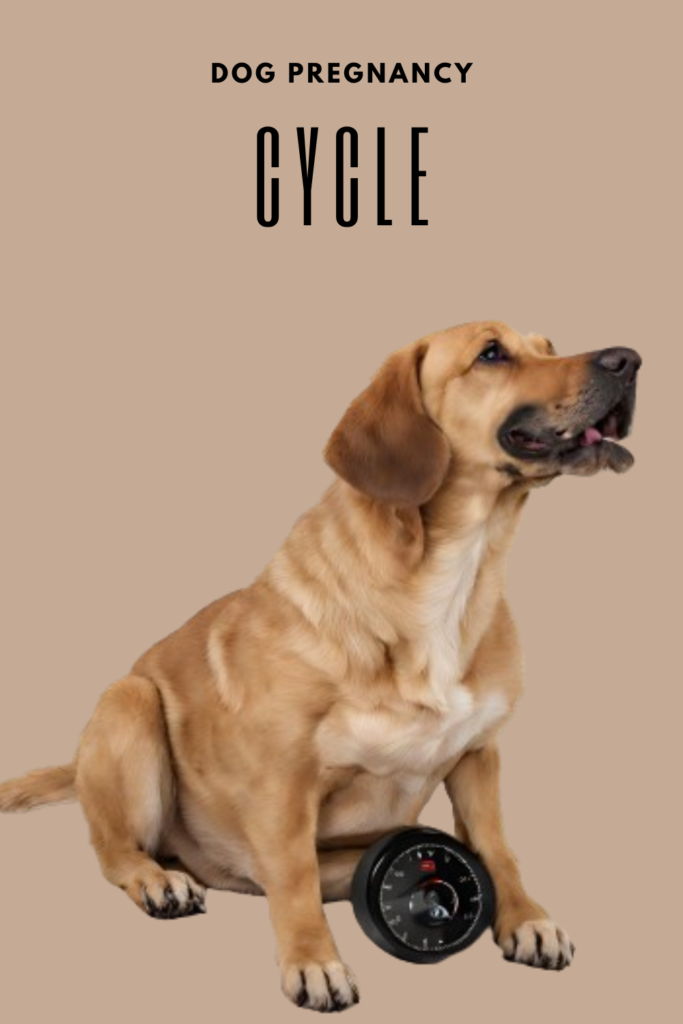
Dog pregnancy cycle leads one through a captivating cycle, marked by unique stages essential for healthy dog breeding and gestation. Grasping the intricacies of the dog pregnancy cycle equips caretakers with the knowledge to support their pets from conception to the joyous arrival of puppies.
For those invested in the sphere of dog breeding, understanding the progression of phases in canine pregnancy is paramount. These stages carry profound implications for dog health, necessitating vigilant observation and care. This nuanced awareness promotes a harmonious alignment with nature’s blueprint for bringing new, vibrant life into the world.
Key Takeaways
- The stages of dog pregnancy encompass a series of physiological changes and developmental milestones.
- Knowledge of the dog pregnancy cycle is crucial for optimal dog health and successful dog breeding.
- Each phase of the canine pregnancy carries specific care requirements and potential health indicators.
- Understanding gestation informs scheduling for pertinent veterinary check-ups and preparations for the birth.
- Professional guidance and resources are available to help navigate the nuances of canine pregnancy.
- Anticipating the needs during each dog pregnancy stage allows for a smoother transition to the wondrous moment of birthing puppies.
Introduction to Dog Pregnancy Cycle
As a dog owner, understanding the nuances of a pregnant dog and the associated signs of dog pregnancy cycle is vital for providing optimal care for your female dog. From the earliest dog pregnancy stage to the point of delivery, there are specific symptoms and veterinary protocols to be aware of, ensuring both mother and puppies thrive. Here, we delve into the key aspects of recognizing pregnancy, the essential nature of veterinary medicine in the care of pregnant dogs, and how pet insurance can offer financial relief for vet costs incurred during this time.
Recognizing the Signs of a Pregnant Dog
Identifying the signs of dog pregnancy early can significantly enhance the care you provide as a dog owner. Observable changes may include:
- Behavioral shifts: Your female dog might display altered behavior, such as increased affection or a desire for more secluded resting spots.
- Appetite changes: A noticeable increase or decrease in appetite can signal pregnancy.
- Morning sickness: Just like in humans, some female dogs may exhibit symptoms of morning sickness.
- Enlargement of mammary glands: As the dog gestation period progresses, the mammary glands will develop in preparation for nursing.
Abdominal palpation by a professional, usually performed by a veterinarian during the early stages of pregnancy, is an additional method to confirm if your dog is pregnant.
The Importance of Veterinary Care During Pregnancy
Veterinary medicine plays a crucial role throughout a canine’s gestation. Regular veterinary check-ups allow monitoring of the dog pregnancy stage through:
- Ultrasounds: To visually confirm pregnancy and monitor the development of the puppies.
- Abdominal palpation: To physically feel for puppies, typically possible after the fourth week of pregnancy.
Veterinary involvement is key in preparing dog services such as whelping assistance, dietary consultation, and birth planning, which are essential during the gestation period of pregnant dogs.
How Pet Insurance Can Help Expectant Dog Owners
Investing in pet insurance can be incredibly beneficial for dog owners anticipating the arrival of new puppies. Such insurance plans may contribute toward:
- Vet costs: Covering routine check-ups and any unforeseen complications that can arise during pregnancy and delivery.
- Dog services: Assisting with costs for services such as genetic testing, pregnancy monitoring, and emergency veterinary care if needed.
Pet insurance offers peace of mind, safeguarding your financial stability while ensuring your pregnant dog receives the best possible care throughout her dog gestation period.
Stages of Dog Pregnancy Cycle
The journey of bringing new puppies into the world is as intricate as it is fascinating, unfolding in distinct stages from mating to birth. Understanding these stages of dog pregnancy helps breeders and dog owners alike to provide the best care for the expectant mother and her future litter. During the course of canine gestation, both the female dog and the unborn puppies undergo significant developments, each marking a milestone in the reproductive process. The American Kennel Club provides comprehensive guidelines tailored to each dog breed to ensure healthy pregnancies and the well-being of the mother dog.
From Mating to Fertilization: The Early Phase
The initial stages of dog pregnancy commence with successful mating and subsequent fertilization. Involved in this critical phase are a male dog and a female dog, each contributing to the process of canine reproduction. Shortly after mating, fertilization takes place, setting the foundation for the remarkable changes that will occur over the next couple of months. A tell-tale sign in this early phase is often a mild vaginal discharge, indicating that the pregnancy has likely begun.
Development Milestones: The First Month
In the first month post-fertilization, the embryos embed in the lining of the uterus and begin to develop. It is during this period when the foundations of the spine, facial features, and organs start to form. This crucial stage of gestation requires meticulous attention to ensure the female dog’s nutritional and medical needs are well-met.
The Crucial Second Month: Preparing for Birth
As the pregnancy progresses into the second month, the development of the puppy(s) nears completion, and the mother dog’s body prepares for the impending dog labor. This preparation is marked by a significant increase in abdominal size and the onset of nesting behavior, which indicates that the birth canal is getting ready for the passage of newborn puppies. Dog owners may notice a shift in the mother dog’s demeanour as she seeks out a secure and comfortable space for delivery.
| Week | Developmental Milestones | Signs in Mother Dog |
|---|---|---|
| 1-2 | Fertilization and embryo development | Possible vaginal discharge |
| 3-4 | Organ development begins | Behavioral changes, increased appetite |
| 5-6 | Fetal growth, skin pigmentation | Enlarging abdomen, nesting instincts |
| 7-9 | Puppies move into birth positions | Visible puppy movement, preparation for labor |
By providing optimal care throughout these phases, from overseeing the initial mating to monitoring the female dog’s health and environment during the gestation, dog breeders can facilitate a smooth and safe delivery for both the mother dog and her puppies.
Pregnancy Management and Dog Health
When it comes to dog health during the span of dog pregnancy stages, comprehensive management is essential. The journey from conception to the final whelping process requires meticulous attention to various health aspects to ensure the wellbeing of both the pregnant dog and her future litter. This includes following guidelines provided by reputable sources, such as the Merck Veterinary Manual, specifically when it comes to procedures like cutting the umbilical cord and ensuring a smooth transition for the newborn puppy into the world.
- Nutrition: A balanced diet rich in essential nutrients is paramount throughout the dog pregnancy stages. Adequate intake of vitamins and minerals supports fetal development and the mother’s health.
- Exercise: Regular, gentle exercise helps maintain the pregnant dog’s physical condition and alleviates stress, but strenuous activity should be avoided as the due date approaches.
- Whelping Preparations: Creating a comfortable whelping area before the expected delivery date can reduce anxiety and provide a safe space for the mother to give birth.
It’s also important to be familiar with the specifics of the birthing process, so let’s focus on a vital aspect of whelping—the umbilical cord care:
According to the Merck Veterinary Manual, the umbilical cord should be tied off with sterile material about one inch from the newborn puppy’s abdomen and cut beyond the knot. Ensuring a clean cut reduces the risk of infection.
As we reach the conclusion of our exploration into the dog pregnancy cycle, it is paramount to reemphasize the importance of meticulous preparation for the final stage—whelping. It is during this period that **dog labor** becomes imminent, necessitating an environment conducive for comfortable birthing, and a keen understanding of the labor process itself. Recognizing nesting behavior and being adept at catering to varying litter sizes are critical aspects of this preparation, ensuring that the mother dog is ready to bring new life into the world.
Preparing for Whelping: The Final Stage
Creating a serene space that allows for the privacy and comfort of the mother during birth is essential. Being well-versed in the stages of **dog labor** and equipped to handle the nuances of the birthing process are skills that come with profound responsibility. Dog owners must be prepared, both emotionally and logistically, to support their pet through this natural, yet complex, labor and birth.
Nurturing the Mother and Newborn Puppies Post-Birth
Following the successful delivery, the paramountcy of **canine care** comes to the forefront. Tending to the health of the mother dog and her **newborn puppies** necessitates diligent attention to nutrition, living conditions, and early socialization. The utilization of various **dog services** provides a support network critical for the welfare of both the puppies and the mother, ensuring a smooth transition through this vulnerable juncture. This phase is as much about monitoring **dog health** as it is about fostering early bonds between the puppies and their human caregivers.
Reflecting on the Miracle of Canine Reproduction and Labour
The miraculous nature of **canine reproduction** underscores the incredible journey from conception to birth. The cycle of life, as seen through the lens of **dog breeding** and **pregnancy**, enhances our understanding and appreciation of the intricate processes that characterize the creation of life. We are reminded of the profound joy and formidable responsibilities inherent in dog breed ownership, a rewarding experience that calls for an unwavering commitment to the health and well-being of our cherished canine companions.
Conclusion
In conclusion, managing each dog pregnancy stage with care and profound knowledge significantly influences the overall dog health and the viability of the puppies. By taking proactive steps in diet, exercise, whelping preparations, and umbilical cord care, the miracle of new life can be welcomed with confidence and joy.


